Can You Have A Pet Mantis Shrimp? Absolutely! This comprehensive guide from PETS.EDU.VN will show you how to successfully keep these fascinating crustaceans, covering everything from aquarium setup to feeding habits. Dive in to learn about mantis shrimp care, tank requirements, and interesting facts about these unique aquatic creatures.
1. Understanding the Mantis Shrimp
Mantis shrimp, also known as stomatopods, are carnivorous marine crustaceans found in oceans worldwide. With over 520 known species, these creatures boast vibrant colors and can grow up to 12 inches long. Popular species for home aquariums include the peacock mantis, zebra mantis, and yellow mantis shrimp. These aren’t your typical aquarium inhabitants; they’re intelligent, predatory, and require a specialized approach to care. Their unique hunting methods and striking appearance make them a captivating pet for experienced aquarists. Consider exploring the diverse world of marine invertebrates for other fascinating additions to your aquarium after learning about the mantis shrimp.
2. Setting Up the Perfect Mantis Shrimp Aquarium
2.1. Choosing the Right Aquarium Size
The size of your mantis shrimp aquarium depends on the species and size of the shrimp. A smaller mantis shrimp can thrive in a 30-gallon tank, while larger species may need a 55-gallon or larger tank. The aquarium should be made of high-quality glass or acrylic to withstand the mantis shrimp’s powerful strikes. Remember, these creatures are strong!
2.2. Essential Equipment for a Healthy Habitat
- Filtration System: A robust filtration system is essential to maintain water quality. A combination of mechanical, chemical, and biological filtration is ideal.
- Heater and Thermostat: Mantis shrimp thrive in temperatures between 72°F and 78°F (22°C to 26°C). A reliable heater and thermostat are crucial.
- Lighting: Standard aquarium lighting is sufficient. Avoid intense lighting, as it can stress the shrimp.
- Substrate: Use a sand or gravel substrate suitable for burrowing.
- Hiding Places: Provide plenty of rocks, caves, and PVC pipes for the mantis shrimp to hide and feel secure.
2.3. Water Parameters: Maintaining a Stable Environment
Maintaining proper water parameters is critical for the health of your mantis shrimp. Regularly test the water and make adjustments as needed.
| Parameter | Ideal Range | Importance |
|---|---|---|
| Salinity | 1.024 – 1.026 SG | Maintaining proper osmotic balance; use a reliable refractometer for accurate readings. |
| Temperature | 72°F – 78°F | Optimal metabolic function; ensure consistent temperature to prevent stress. |
| pH | 8.1 – 8.4 | Essential for biological processes; monitor regularly and adjust as needed. |
| Ammonia (NH3) | 0 ppm | Highly toxic; indicates poor filtration and requires immediate attention. |
| Nitrite (NO2) | 0 ppm | Toxic; indicates the biological filter is not fully established. |
| Nitrate (NO3) | < 20 ppm | Should be kept low through regular water changes to prevent algae blooms. |
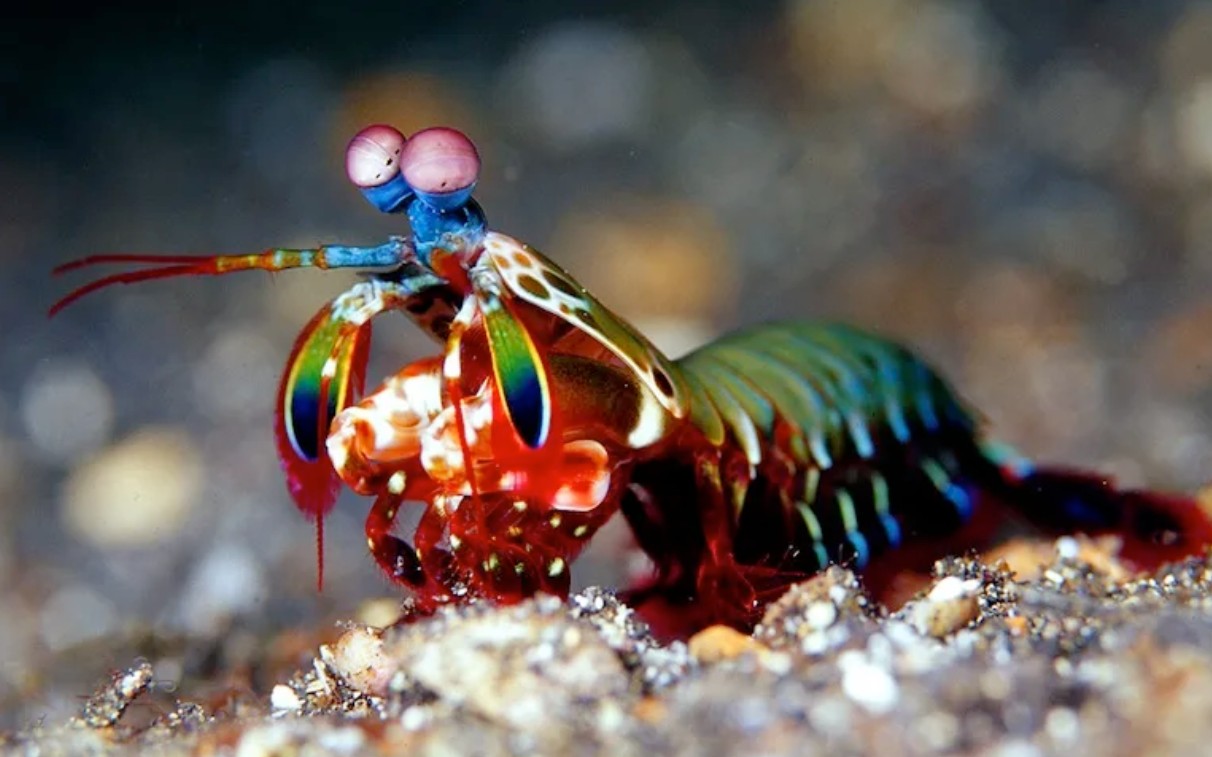
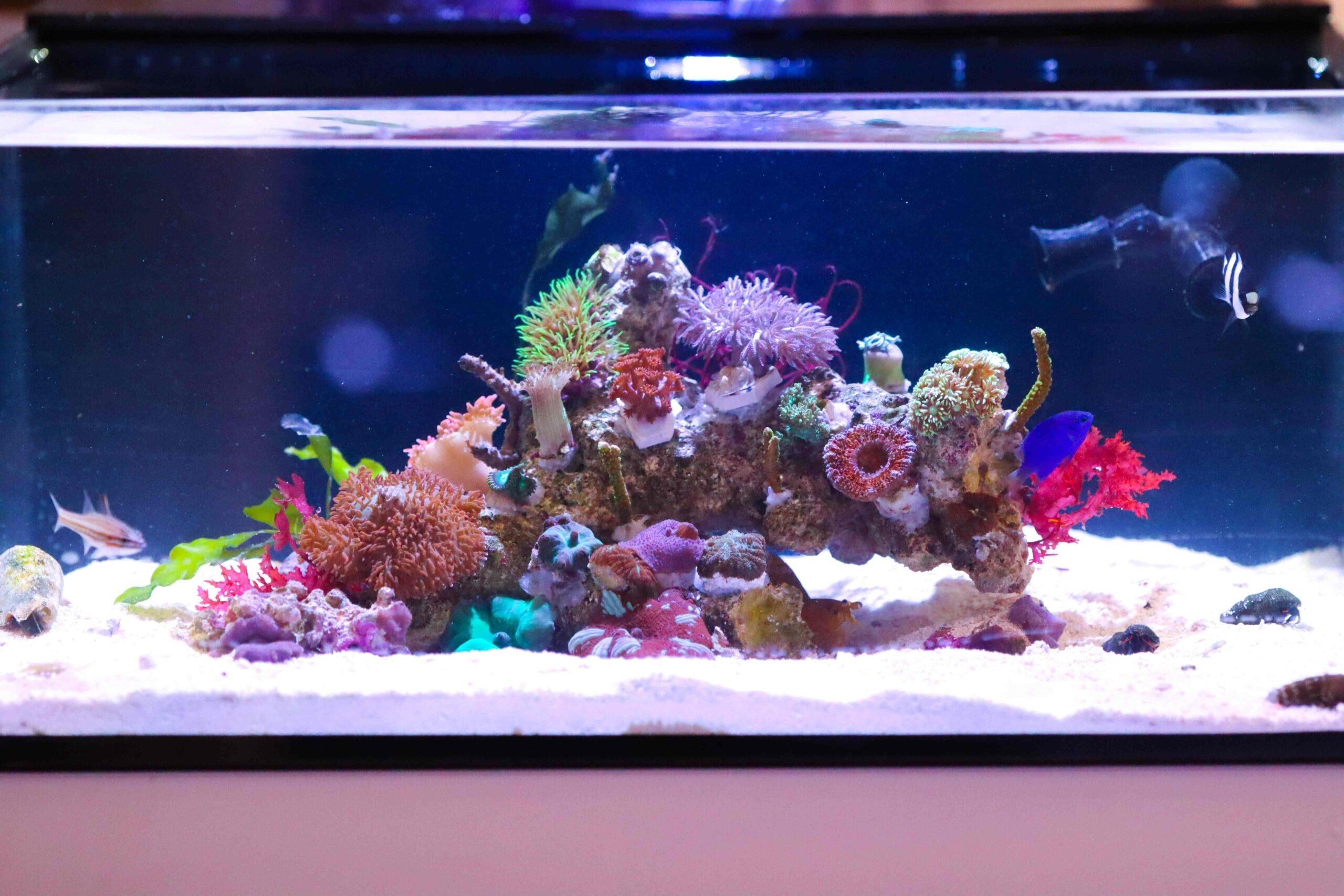
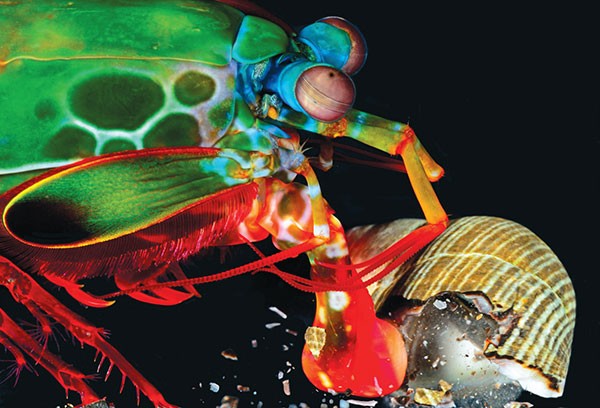
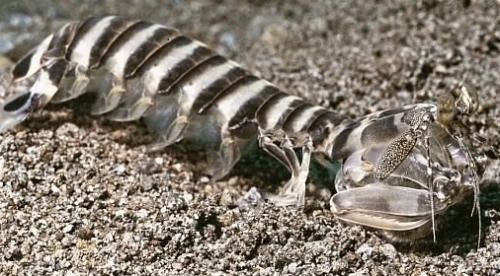
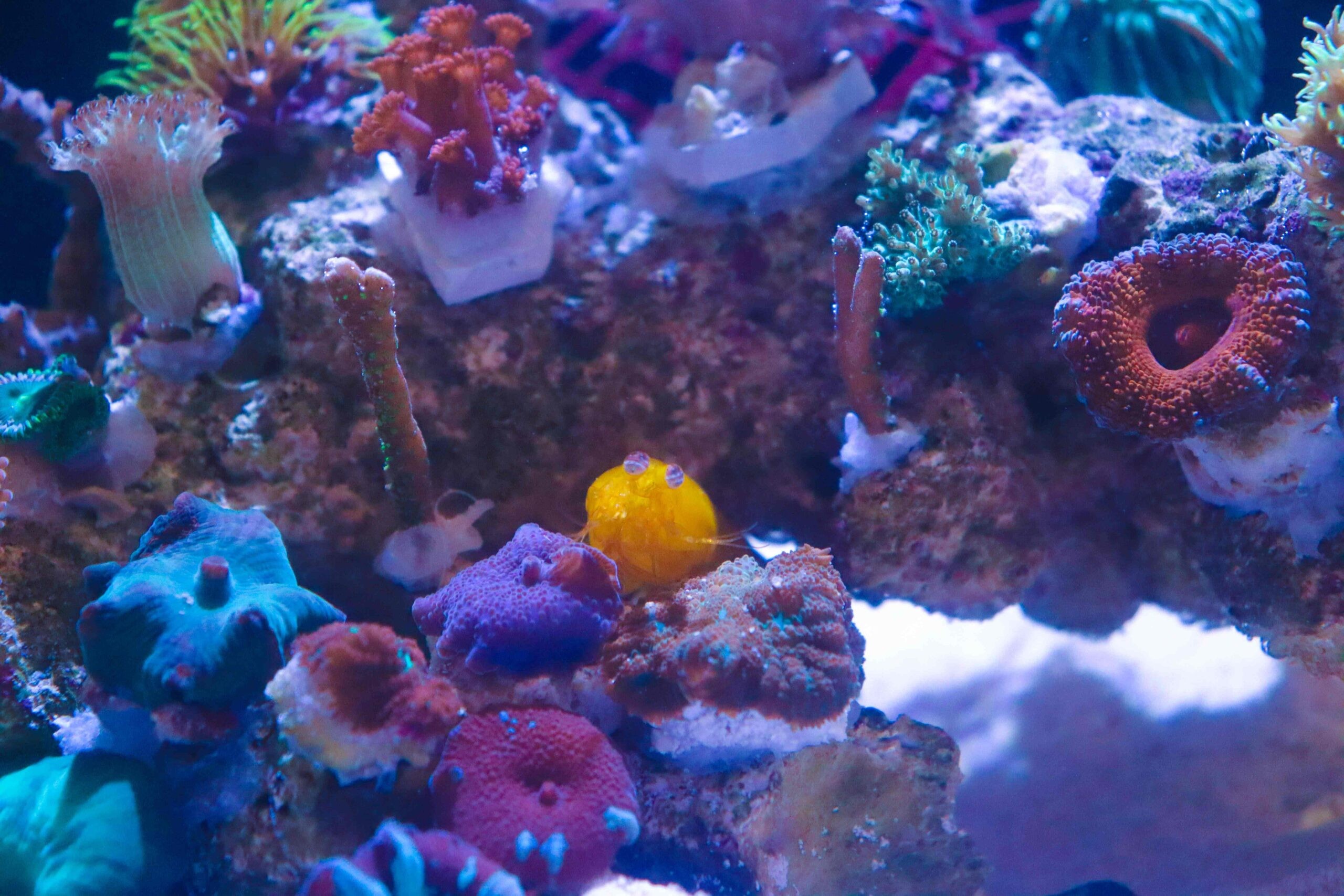
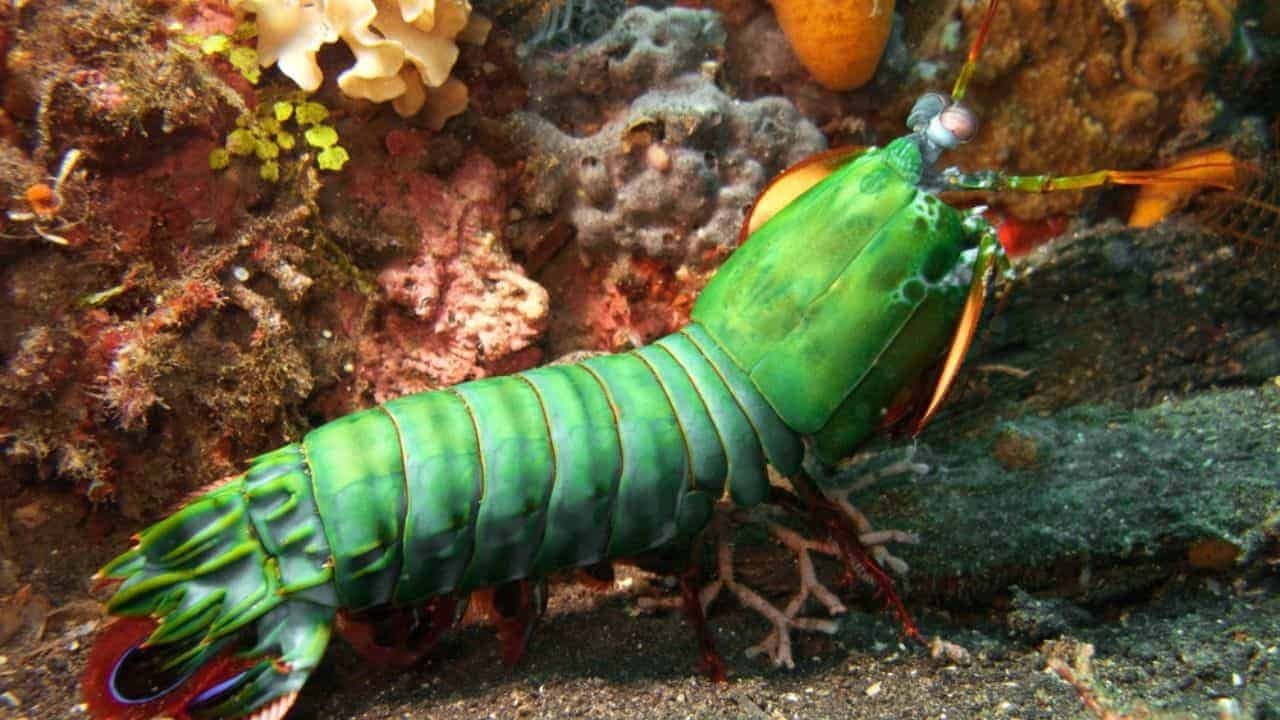
2.4. Reef Casa: The Ideal Mantis Shrimp Aquarium
The Reef Casa mantis shrimp aquarium is an excellent choice for housing these unique creatures. Its all-in-one filter design simplifies cleaning, and its compact size allows for placement in various locations. This aquarium provides a secure and comfortable environment for your mantis shrimp to thrive.
3. Understanding Mantis Shrimp Behavior
Mantis shrimp are known for their intelligence and complex social behaviors. They are skilled hunters and exhibit fascinating behaviors, such as burrowing, creating nests, and solving problems. Understanding these behaviors is crucial for providing a suitable environment for your pet.
3.1. The Power of the Punch: Smashing vs. Spearing
Mantis shrimp are divided into two main types based on their hunting style: smashers and spearers.
- Smashers: These mantis shrimp possess powerful club-like appendages used to smash open shells of prey like crabs and snails.
- Spearers: These mantis shrimp have spear-like appendages used to impale soft-bodied prey like fish and worms.
Understanding which type of mantis shrimp you have is essential for providing the appropriate food and tank environment.
3.2. Intelligence and Social Behavior
Mantis shrimp are intelligent creatures capable of learning and problem-solving. They exhibit complex social behaviors, including communication through body language and chemical signals. Observing their interactions and activities can be a rewarding experience for any pet owner.
3.3. Burrowing and Nesting Habits
Mantis shrimp are natural burrowers and create nests in the substrate. Providing a deep sand bed and plenty of rocks and caves will allow them to exhibit this natural behavior. These burrows serve as both a home and a hunting ground.
4. Feeding Your Mantis Shrimp
Mantis shrimp are carnivorous predators that require a diet rich in live and frozen foods. Understanding their feeding habits is crucial for maintaining their health and well-being.
4.1. What Do Mantis Shrimp Eat?
Mantis shrimp eat a variety of live foods, including hermit crabs, gastropods, crabs, mollusks, and worms. They can also be trained to accept dead frozen krill, mysis shrimp, and brine shrimp. Our mantis shrimp at PETS.EDU.VN also accept dead fish, and we keep 1-2 hermit crabs in the tank at all times for hunting.
4.2. How Often to Feed
Mantis shrimp should be fed every 2-3 days. Feeding frequency depends on the size and activity level of the shrimp. Overfeeding can lead to water quality issues, so it’s essential to monitor their food intake.
4.3. Training Your Mantis Shrimp to Accept Frozen Foods
Training your mantis shrimp to accept frozen foods can be a convenient way to ensure they receive a balanced diet. Start by offering small pieces of frozen food alongside live food. Gradually increase the amount of frozen food while decreasing the amount of live food.
4.4. Nutritional Requirements
A balanced diet is essential for the health of your mantis shrimp. Ensure their diet includes a variety of nutrients to support their growth and overall well-being.
| Nutrient | Source | Benefits |
|---|---|---|
| Protein | Live and frozen seafood, such as shrimp and fish | Essential for muscle growth and repair. |
| Fats | Fatty fish and crustaceans | Provides energy and supports hormone production. |
| Vitamins | Gut-loaded live foods and vitamin supplements | Supports immune function and overall health. |
| Minerals | Calcium-rich foods, such as shellfish | Essential for exoskeleton development and strength. |
5. Can Mantis Shrimp Break Aquarium Glass?
No, a mantis shrimp will not typically break aquarium glass. While their strikes are powerful and can produce a loud snapping sound, the glass usually remains intact. However, it’s essential to use high-quality glass or acrylic aquariums to minimize the risk of damage.
6. Compatibility with Other Aquarium Inhabitants
Choosing compatible tank mates for your mantis shrimp is crucial to prevent aggression and ensure the safety of all inhabitants.
6.1. Can You Keep Fish with a Mantis Shrimp?
Yes, it’s possible to keep fish with a mantis shrimp, but careful consideration is needed. Avoid sand-dwelling fish like gobies and sand-sifting fish, as the mantis shrimp may attack them. Due to their powerful claws, most attacks on fish are likely to be lethal.
6.2. Can You Keep Corals with a Mantis Shrimp?
Yes, mantis shrimp generally do not bother corals. They can be kept with living corals and saltwater plants without issue. This allows you to create a beautiful and diverse reef environment in your mantis shrimp aquarium.
6.3. Can You Keep More Than One Mantis Shrimp?
Most species of mantis shrimp live alone, but some species live in pairs for life. Mantis shrimp are territorial and aggressive, so keeping more than one in an aquarium can lead to territorial disputes over caves and nests. We do not recommend attempting to keep more than one mantis shrimp in a single aquarium.
7. Mantis Shrimp Health and Lifespan
Mantis shrimp are hardy creatures, but proper care is essential for maintaining their health and maximizing their lifespan.
7.1. Common Health Issues
While mantis shrimp are generally hardy, they can be susceptible to certain health issues, including:
- Exoskeleton Problems: Issues like incomplete molting or shell deformities can occur due to poor water quality or nutritional deficiencies.
- Parasitic Infections: Mantis shrimp can be affected by parasites, leading to lethargy or unusual behavior.
- Injuries: Physical injuries from aggressive tank mates or accidents can occur.
7.2. Preventing Health Issues
Maintaining optimal water quality, providing a balanced diet, and avoiding aggressive tank mates are crucial for preventing health issues in mantis shrimp. Regular observation can help detect early signs of illness.
7.3. Lifespan of Mantis Shrimp
Mantis shrimp can live in captivity for up to 10 years. Some wild species, like the green mantis shrimp, are thought to live up to 20 years. The average life expectancy in captivity is 7-10 years, depending on the species and care provided.
8. Handling Mantis Shrimp Safely
Handling mantis shrimp requires caution due to their powerful claws and spears.
8.1. Why You Shouldn’t Touch a Mantis Shrimp
We do not recommend touching or handling a mantis shrimp. Their incredibly sharp and fast spears are capable of breaking the skin. It will feel like a very powerful bee sting and may cause slight bleeding.
8.2. Safe Interaction Techniques
If you need to move or interact with a mantis shrimp, use a net or a container to avoid direct contact. Always wear gloves to protect your hands from potential injury.
9. Cost and Availability of Mantis Shrimp
The cost of a mantis shrimp varies depending on the species and size.
9.1. Average Cost of a Mantis Shrimp
Certain species of mantis shrimp can be found for as little as $25-40. More desirable species with unique and striking colors are usually around $100. Large or very beautiful colored mantis shrimp can sometimes fetch as much as $150-200. The most common type of mantis shrimp kept in aquariums is the peacock mantis shrimp.
9.2. Where to Find Mantis Shrimp
Mantis shrimp can be found at specialized aquarium stores and online retailers. Ensure you purchase from a reputable source that provides healthy and well-cared-for animals.
10. Breeding Mantis Shrimp
Breeding mantis shrimp in captivity is challenging, and there are currently no captive-bred options available. All mantis shrimp for the aquarium hobby are wild-caught.
10.1. Challenges of Breeding in Captivity
Breeding mantis shrimp is difficult due to their complex reproductive behavior and the specific environmental conditions required for larval development.
10.2. Conservation Concerns
Since all mantis shrimp in the aquarium trade are wild-caught, it’s essential to support sustainable collection practices and responsible aquarium keeping to minimize the impact on wild populations.
11. Interesting Facts About Mantis Shrimp
Mantis shrimp are fascinating creatures with many unique characteristics.
11.1. The Fastest Punch in the Animal Kingdom
Mantis shrimp have the fastest punch in the animal kingdom. Their strike can reach speeds of up to 50 miles per hour, generating forces of over 1,500 newtons. This incredible speed and power allow them to break open the shells of their prey with ease.
11.2. Complex Eyesight
Mantis shrimp have some of the most complex eyes in the animal kingdom. They can see polarized light and have 16 color-receptive cones, compared to humans, who have only three. This allows them to perceive a wide range of colors and details in their environment.
11.3. Unique Communication Methods
Mantis shrimp communicate through a variety of methods, including body language, chemical signals, and fluorescence. They use these signals to attract mates, defend their territory, and coordinate hunting activities.
12. The Ethical Considerations of Keeping Mantis Shrimp
Keeping a mantis shrimp as a pet comes with ethical responsibilities.
12.1. Responsible Sourcing
Ensure that your mantis shrimp comes from a reputable source that practices sustainable collection methods. Avoid purchasing from vendors who contribute to the exploitation of wild populations.
12.2. Providing Proper Care
Mantis shrimp require specific care to thrive in captivity. Providing a suitable environment, balanced diet, and regular maintenance is essential for their well-being.
12.3. Long-Term Commitment
Mantis shrimp can live for many years, so be prepared to commit to their care for the long term. Consider whether you have the resources and dedication to provide them with a good quality of life.
13. Final Thoughts: Is a Mantis Shrimp Right for You?
Keeping a mantis shrimp as a pet can be a rewarding experience for experienced aquarists. However, it’s essential to understand their specific needs and behaviors before bringing one home. With proper care and attention, you can provide a healthy and enriching environment for these fascinating creatures.
14. FAQ About Keeping Mantis Shrimp
14.1. Are mantis shrimp hard to keep?
Mantis shrimp are not harder to keep than other saltwater shrimp. They are extremely hardy, but maintaining consistent salinity is essential.
14.2. Can a mantis shrimp break the aquarium glass?
No, a mantis shrimp will not typically break aquarium glass, but use high-quality glass or acrylic.
14.3. What do mantis shrimp eat?
Mantis shrimp eat live foods like hermit crabs, gastropods, and frozen foods like krill and mysis shrimp.
14.4. How often should I feed a mantis shrimp?
Feed mantis shrimp every 2-3 days, depending on their size and activity level.
14.5. Can I keep fish with a mantis shrimp?
Yes, but avoid sand-dwelling fish that may be attacked.
14.6. Can I keep corals with a mantis shrimp?
Yes, mantis shrimp generally do not bother corals.
14.7. Can I keep more than one mantis shrimp?
No, mantis shrimp are territorial and should be kept alone.
14.8. How long can mantis shrimp live?
Mantis shrimp can live 7-10 years in captivity, with some species living up to 20 years.
14.9. Can I touch a mantis shrimp?
No, their sharp spears can break the skin, causing a painful injury.
14.10. Can I breed mantis shrimp in captivity?
Breeding mantis shrimp is difficult, and all aquarium specimens are wild-caught.
15. Learn More at PETS.EDU.VN
At PETS.EDU.VN, we understand the unique challenges and rewards of caring for exotic pets like the mantis shrimp. Our comprehensive resources are designed to provide you with the most up-to-date information and expert advice. Whether you’re a seasoned aquarist or just starting out, we’re here to help you create the best possible environment for your aquatic companions.
15.1. Explore Our Extensive Guides
Delve deeper into the world of marine invertebrates with our detailed guides on aquarium setup, feeding strategies, and health management. Learn from our team of experienced marine biologists and aquarists who share their knowledge and insights to help you succeed.
15.2. Connect with a Community of Experts
Join our vibrant community forum where you can connect with other mantis shrimp enthusiasts, ask questions, and share your experiences. Benefit from the collective wisdom of our members and receive personalized advice tailored to your specific needs.
15.3. Find Trusted Local Services
Need help with aquarium maintenance or sourcing the right supplies? Our directory of trusted local services connects you with reputable professionals in your area, from veterinarians specializing in aquatic animals to aquarium maintenance companies.
15.4. Get Personalized Support
Have specific questions or concerns about your mantis shrimp? Contact our dedicated support team for personalized assistance. We’re here to provide you with the guidance and resources you need to ensure the health and happiness of your pet.
Ready to take your mantis shrimp keeping to the next level? Visit PETS.EDU.VN today and unlock a wealth of information and support. Your aquatic adventure awaits!
Contact Us:
- Address: 789 Paw Lane, Petville, CA 91234, United States
- WhatsApp: +1 555-987-6543
- Website: pets.edu.vn
